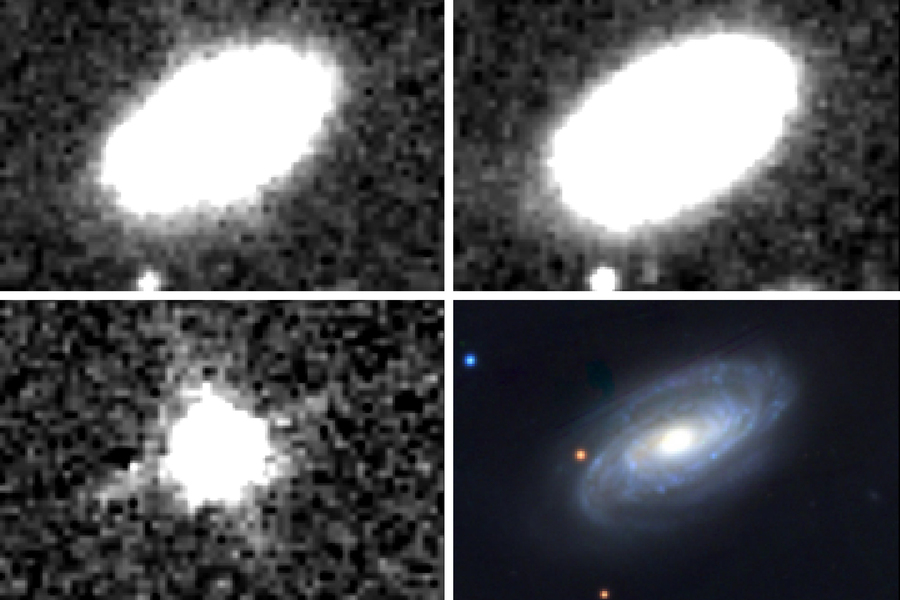MIT: Closest Example Yet of a Black Hole Devouring a Star
Posted: Mon May 01, 2023 5:58 pm
Astronomers Detect the Closest Example Yet of a Black Hole Devouring a Star
Massachusetts Institute of Technology | 2023 Apr 28
A Black Hole Tore a Star to Pieces. The Closest We’ve Ever Seen.
Universe Today | 2023 Apr 30
A Luminous Dust-Obscured Tidal Disruption Event
Candidate in a Star-Forming Galaxy at 42 Mpc ~ Christos Panagiotou et al
Massachusetts Institute of Technology | 2023 Apr 28
The event was spotted in infrared data — also a first — suggesting further searches in this band could turn up more such bursts.
Once every 10,000 years or so, the center of a galaxy lights up as its supermassive black hole rips apart a passing star. This “tidal disruption event” happens in a literal flash, as the central black hole pulls in stellar material and blasts out huge amounts of radiation in the process.
- Astronomers at MIT and elsewhere have observed infrared signs of the closest tidal disruption event (TDE) to date. A bright flare was detected from the galaxy NGC 7392 in 2015 (top left panel). Observations of the same galaxy were taken in 2010-2011 (top right), prior to the TDE. The bottom left shows the difference between the first two images, representing the actual, detected TDE. For comparison, the bottom right panel shows the same galaxy in the optical waveband. (Credits: MIT/C Panagiotou et al)
Astronomers know of around 100 tidal disruption events (TDE) in distant galaxies, based on the burst of light that arrives at telescopes on Earth and in space. Most of this light comes from X-rays and optical radiation.
MIT astronomers, tuning past the conventional X-ray and UV/optical bands, have discovered a new tidal disruption event, shining brightly in infrared. It is one of the first times scientists have directly identified a TDE at infrared wavelengths.
What’s more, the new outburst happens to be the closest tidal disruption event observed to date: The flare was found in NGC 7392, a galaxy that is about 137 million light-years from Earth, which corresponds to a region in our cosmic backyard that is one-fourth the size of the next-closest TDE. ...
The new study suggests that conventional X-ray and optical surveys may have missed TDEs in star-forming galaxies because these galaxies naturally produce more dust that could obscure any light coming from their core. Searching in the infrared band could reveal many more, previously hidden TDEs in active, star-forming galaxies. ...
A Black Hole Tore a Star to Pieces. The Closest We’ve Ever Seen.
Universe Today | 2023 Apr 30
A Luminous Dust-Obscured Tidal Disruption Event
Candidate in a Star-Forming Galaxy at 42 Mpc ~ Christos Panagiotou et al
- Astrophysical Journal Letters 948(1):L5 (2023 May 01) DOI: 10.3847/2041-8213/acc02f
- arXiv > astro-ph > arXiv:2303.02710 > 05 Mar 2023
